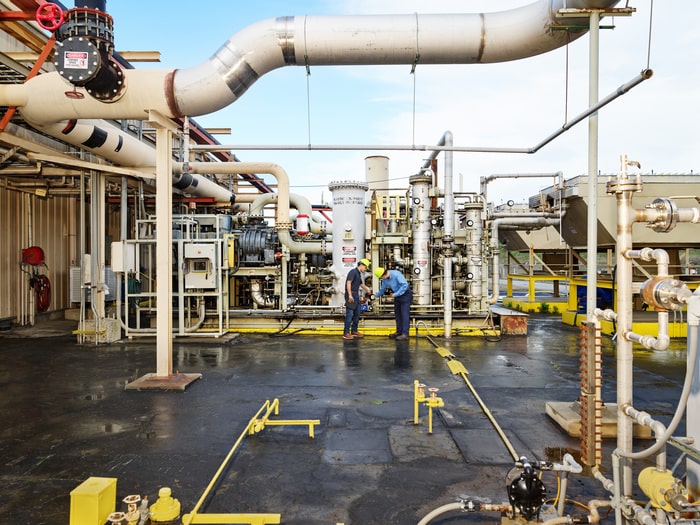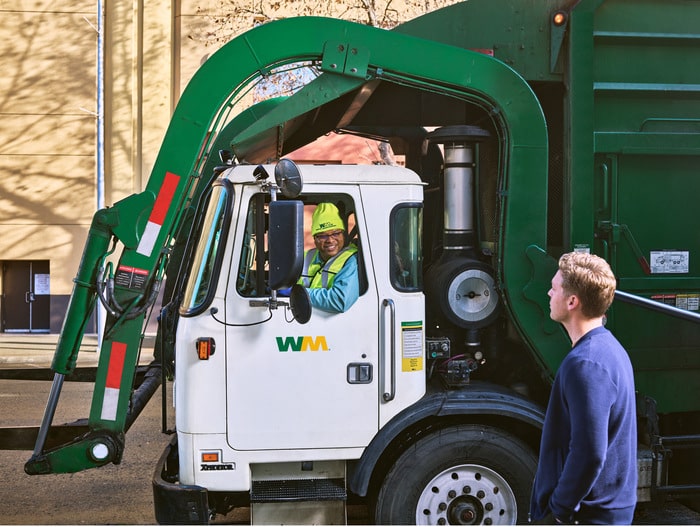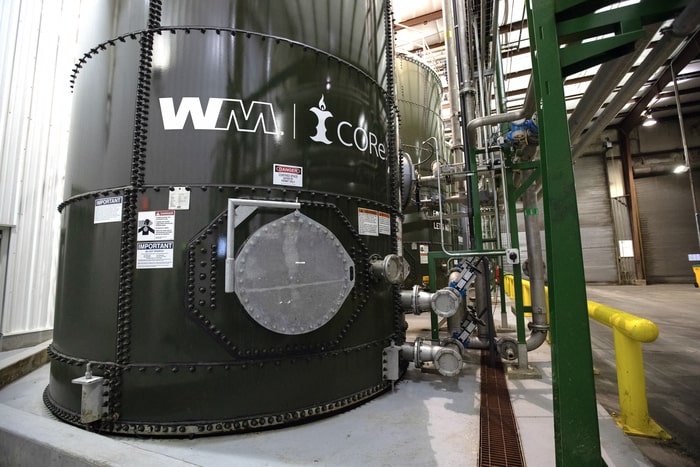
- Sustainability Home
- Energy is Renewable
Energy is Renewable
We leverage advanced technologies to turn waste into energy that powers communities and reduces emissions.
We're innovating for climate progress.
At WM, we're innovating for climate progress. By deploying advanced technologies that use waste to produce energy, we are both powering communities and reducing our carbon footprint. Our investments in expanding our renewable energy technologies are decarbonizing our business and helping our customers meet their emissions goals.
Our Impact:
In 2022, we:
Reduced landfill emissions by 10% compared to 2021, from upgrades to gas collection and control systems
Utilized 45% captured landfill gas for beneficial use and generated 54,504,000 MMBTUs of renewable energy
Continued deployment and testing of technology to gather more precise data on landfill emissions
Incrementally transitioned over 60% of WM's collection fleet to compressed natural gas vehicles by 2022, avoiding the use of millions of gallons of diesel fuel every year
Allocated 47% renewable natural gas to our compressed natural gas collection fleet, resulting in 5% reduction in emissions compared to 2021
Looking Ahead:
In the years ahead, we plan to:
Continue implementing emissions reduction plans to reduce absolute Scope 1 and Scope 2 GHG emissions 42% by 2031 from a 2021 baseline
Increase the beneficial use of landfill gas to 65% by 2026, and ultimately reach around 90% beneficial use
Make continued investments in landfill gas collection and measurement systems
Continue to convert our fleet to alternative fuel vehicles, and achieve 70% of collection fleet by 2025
Increase allocation of renewable natural gas to our compressed natural gas fleet, reaching 100% by 2026
Sharing Inspiration WM Sustainability Stories
2023
Sustainability Report
Read more sustainability stories and learn more about our goals, progress and initiatives in this year's report


